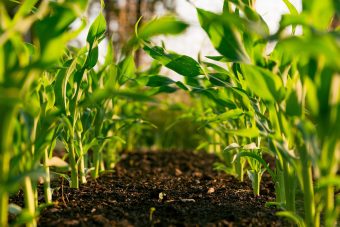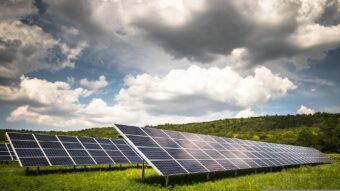
Solar power plants require that the land on which they are installed be accessible and sunny and that there are transmission lines nearby to release the generated energy into the power grid. Taking into account the above requirements, agricultural land is the most suitable area for installing such power plants. And while discussing the importance of renewable energy sources, environmental protection, or energy security, we must not ignore the importance of agricultural production. Urban planning and climate change have questioned the security of this sector’s survival, which is why converting every hectare of agricultural land into space for the construction of solar power plants represents an additional burden.
To find a solution that would ensure the satisfaction of all involved parties, scientists are constantly developing and improving agrovoltaics, that is, a system that allows solar panels and plants to be grown on the same piece of land. This system involves placing solar panels above the crops.
Once installed, these solar panels leave about 90 per cent of the surface free, which can also be used for growing crops. Not only do such solar panels leave enough room for the agricultural sector, but they can be collaborators in safer cultivation.
IN FOCUS:
- CHANGES IN THE RES SEGMENT LEAD TO A STABLE POWER SYSTEM
- GREEN TRANSITION – AN OPPORTUNITY TO DEVELOP SUSTAINABLE ECOSYSTEMS
- APPLICATION OF ENVIRONMENTALLY FRIENDLY MATERIALS IN CONTEMPORARY ARCHITECTURE
Namely, solar power plants protect crops from bad weather such as hail, showers, wind and strong sun rays. An additional reduction of CO2 emissions is achieved, provided the irrigation system is connected to the supply of power generated by the installed panels.
In this way, with careful planning and design of such a power plant, we can grow almost all agricultural plants on condition that we have chosen the appropriate panels and placed them at a sufficient height and a proper angle. It has been proven eggplant, cabbage, broccoli, artichoke, aromatic herbs and flowers, sugar beet, and other plants can be grown under such panels.

In terms of the usual solar panels, which are opaque, this kind of area is most suitable for growing those plants that do not need a large amount of sunlight. However, regular solar panels can be installed at greater angles to allow more light to pass between them. Also, the technology allows that the angle of installation is not fixed. Still, they can be turned, creating a larger or smaller shade following the sun’s position throughout the day.
Innovative solutions also focus on perfecting transparent panels – solar windows, like greenhouses, would let in large amounts of sunlight. They have already been used in practice. In Greece, a greenhouse with solar windows was made for a vineyard. They absorb UV rays, which the plants do not need, and let those useful for their growth through.
Although a solar power plant needs the sun’s energy, temperatures that are too high can have the opposite effect, i.e. they can reduce their production capacity. Planting certain species under the panels can reduce their temperature, a mutual benefit.
The United Nations have recognized investing effort in finding ways to save water, food, and energy as one of the most important factors of sustainable development because these three resources are the key to the survival of life on our planet. Due to population growth, higher demand for food requires greater amounts of water and energy. On the one hand, energy is used to irrigate crops during the entire cycle – from their growth to processing to a final product. On the other hand, fresh water is already an endangered resource of which agriculture is its biggest consumer and is still very much needed to produce energy from many sources. Agrovoltaics could play an important role in reducing the risk of the abovementioned resources. Solar power plants do not require water to operate. At the same time, they can produce the energy needed for irrigation to avoid using energy obtained from those sources that need a large amount of water. All of this is possible to achieve by installing panels on agricultural areas where they would occupy a minimum of space and thus would not jeopardize the cultivation of crops.
Prepared by: Katarina Vuinac
Read the story in the new issue of the Energy portal Magazine RENEWABLE ENERGY SOURCES

